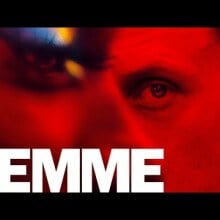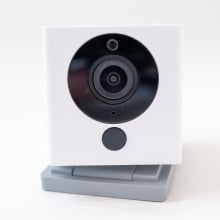While most of us have a smartphone glued to our hands that can easily shoot an endless number of high-quality photos on the go, more and more people are returning to a style of photography that our parents and grandparents grew up with: instant film cameras.
We take so many digital photos with our phones, but we've moved so far away from having physical photos that we can display in the real world. Part of that is because real film cameras are a lot less convenient to carry around, and they have a greater learning curve to use properly. They also require you to bring your film to get developed, and then (*gasp*) wait days before those physical photos are ready to pick up and take home. Even simple point-and-shoot digital cameras still require you to upload your photos online and send them off to get printed by a service, like Shutterfly (aka more waiting).
But in a tech-forward world where everything we do seems to be centered around instant gratification, it actually makes a lot of sense that we'd be drawn back to instant film cameras that allow a photograph to go from point to shoot to print in a matter of seconds.
What is an instant film camera and how does it work?
To put it simply, an instant film camera is designed with its own little internal developing studio in which all the mechanisms necessary to develop the instant film exist. These instant film cameras must be outfitted with self-developing film, which removes the need for you to develop the film yourself or bring it someplace where it can be developed for you. Instant film cameras are also typically very easy to use, with simple buttons and minimal features so beginners can jump in with very little experience needed.
In more technical terms, the self-developing film in an instant camera typically contains several layers sandwiched together — with dye, developer, etc. — which contain all the necessary chemicals for the photo development process. These layers are arranged in a way that essentially sets off a chemical reaction once you shoot an image and tell the camera to print it. Then, the printed photograph is ejected from the camera, though you may need to wait a few seconds or even minutes for the image to fully develop.
The first and most famous of these instant film cameras was (and still is) known as a Polaroid camera. In fact, most people still refer to instant film cameras and their resulting photographs as "Polaroids" regardless of the camera brand. Today's Polaroid cameras are a bit more advanced than those of the past (i.e., original Polaroids took up to 15 minutes to develop), and many competitor brands create photographs that develop much quicker than the original camera.
What types of instant film cameras are there?
One of those competitors is Fujifilm, whose Instax cameras tend to rule the market with a whole line of instant film cameras to choose from. Regardless of the brand, however, most instant film cameras work the same way, though there are some variations in terms of creative control (i.e., adjustable exposure, interchangeable lenses, etc.). Also, keep in mind that some instant film cameras run on replaceable batteries, while others are rechargeable via USB cable.
That said, the biggest difference between the vast array of instant film cameras on the market is the size of the photographs that they print. The aforementioned Instax film lineup alone contains film sizes ranging from mini to square to wide. Then there are other brands, like Polaroid and some Kodak cameras, that print a more classic Polaroid-style photo that is a bit larger in size.
It should also be noted that some instant film cameras allow you to review your photo before it is printed, ensuring that you only use your self-developing film on the pictures that you really love. Others, however, automatically print every picture you snap — even if you blinked or got photobombed or just didn't look as immaculate as you wished. (Though there is definitely something to be said for capturing moments exactly as they happen, unfiltered and unedited — like the tangible equivalent of BeReal.)
Is instant film expensive?
While we're on the topic of film and how quickly it can be used up depending on the camera type, it should be noted that instant film can get a little pricey. Each instant camera brand typically only works with its own brand of instant film — and in the case of the Instax line, the film specifications narrow even further. (For example, an Instax Mini can't use Instax Square film, and vice versa, even though they're both Instax films made by Fujifilm.)
Some brands are a little more expensive than others, but you should generally expect to pay about fifty to sixty cents per photo. Buying multiple film packs in bulk, however, will bring that cost down significantly — as long as you know this is a hobby you'll keep up for a while. But, keep in mind that instant film can expire! So don't expect to go too wild with those bulk film packs either.
Some brands' instant film has adhesive on the back so you can use the printed photos as stickers. Some instant film allows the photo to fill the film edge-to-edge, while others have a white border around the image like classic Polaroid camera photos. Or, if you want to get even fancier, you can opt for instant film with colorful borders (like this rainbow-colored film from Instax) — though that’ll cost you more per photo.
Are instant film cameras worth it?
There's an instant film camera for every budget and shooting style, so they can be really fun to play around with, whether you're a casual photographer taking glamor shots of your pets or a seasoned pro seeking a new outlet for your photographic creativity. The small pictures are fun to use for scrapbooking and photo albums, and they allow for a really awesome and creative way to add some personalized decor to any space. (And you don’t need to be a teenage girl to appreciate these mini-sized portraits, either.) These nostalgic cameras are also a fun addition to parties and special celebrations to allow guests to instantly bring home memories in the palms of their hands.
That said, instant film cameras can get a little pricey — even if you opt for the most budget-friendly option — because you'll need to continuously replenish it with more instant film. But, as long as you keep that extra cost in mind, instant film cameras are certainly worth a shot. (Photography pun most definitely intended.)
















